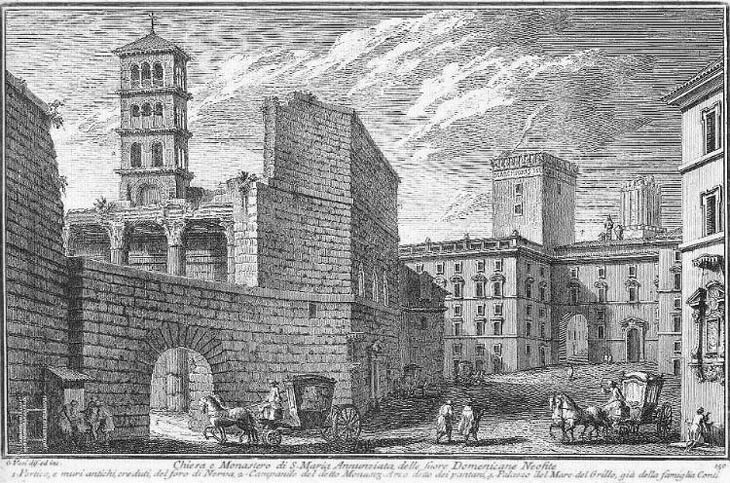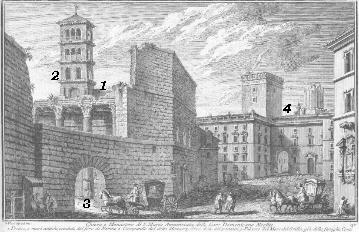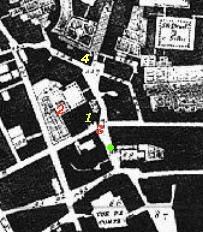  S. Maria Annunziata (Book 8) (Day 3) (Rione Monti) In this page:
The plate is officially named after the Nunnery of the Annunziata, but Vasi's objective is the impressive wall of black stones (peperino) which belonged to the Forum of Nerva. To show it Vasi did not hesitate to enlarge the small street to allow for a better view. The view is taken from the green dot in the 1748 map below. In the description below the plate Vasi made reference to: 1) Ruins of Foro di Nerva; 2) Bell tower of the nunnery; 3) Arco dei Pantani; 4) Palazzo del Marchese del Grillo.
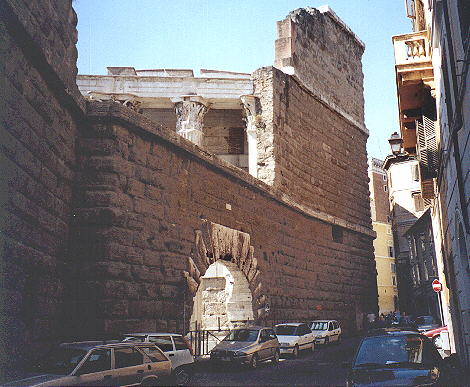 Around 1930 extensive restorations of the Forum of Nerva were carried out. This led to the pulling down of the bell tower of the church. The Forum
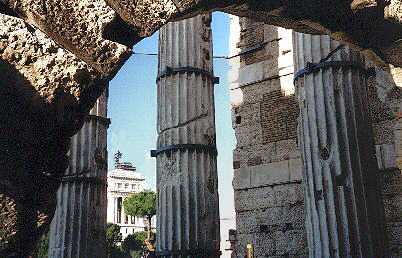
This arch was called Arco dei Pantani (pantano in Italian means swamp and since the time of Ancient
Rome this area in a low position used to be flooded). A street from here went to Via Alessandrina. The columns are what is left of the Temple built by Augustus in BC 2 in consequence of a vow which he made during his war against Caesar's murderers.
 The front of the church still shows the relief with the Annunciation. The entrance to the nunnery was devoted to Saint Pius V as the very old coat of arms reminds us. 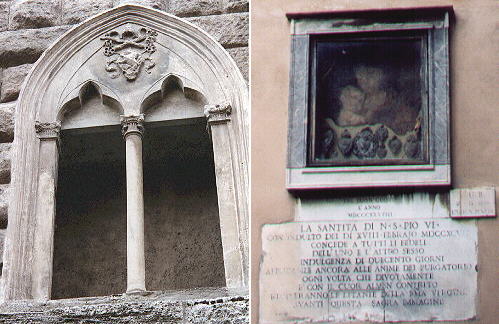 The windows above the entrance bear the coat of arms of Sixtus V. The plate by Vasi shows to the right an elaborate madonnella. The painting is still there, but the baroque frame is lost. The inscription was added in 1797 and it grants 200 days of indulgence to those who will devoutly pray. Palazzo del Marchese del Grillo
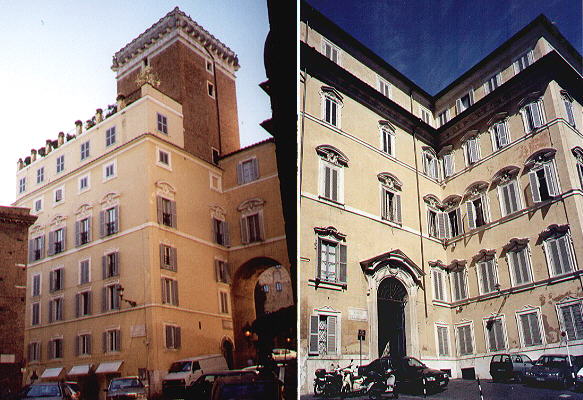 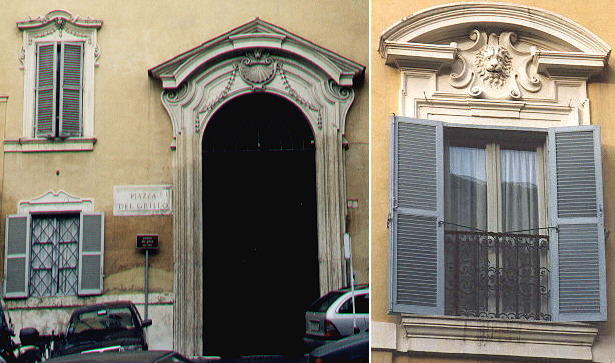
The last element of the plate is the Palace of Marchese (Marquis) del Grillo (cricket). The huge tower has an inscription with the name of the owner and it commands an impressive view over the Forum.
The del Grillo were a very important family in the XVIII/XIXth
centuries and had their palace in a very commercial area.
The entrance to the palace was designed by Carlo Rainaldi.
Next plate in Book 8: Chiesa e Monastero di S. Cosimato Next step in Day 3 itinerary: Collegio de' Neofiti Next step in your tour of Rione Monti: Collegio de' Neofiti  or to Book 8 or to
The Coats of Arms of the Popes or
to My Home Page on Baroque Rome or to
My Home Page on Rome in the footsteps of an XVIIIth century traveller or to Book 8 or to
The Coats of Arms of the Popes or
to My Home Page on Baroque Rome or to
My Home Page on Rome in the footsteps of an XVIIIth century traveller
|
All images © 1999 - 2003 by Roberto Piperno. Write to romapip@quipo.it
